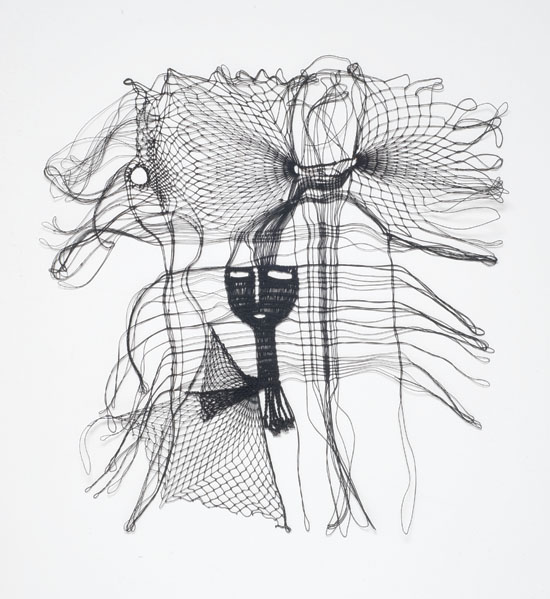At SOFA NY 2012, browngrotta arts will present two thread drawings from the 1970s by Czechoslovokian artist Luba Krejci (1925-2005).
Krejci was an extremely diversified artist who made lace, embroidered and printed textiles, created tapestries, straw figures, wickerwork and children’s clothing. She made handbags and hats and exhibited extensively in Europe, Canada, the United States, Japan, Russia, Argentina and New Zealand.
Her most significant contribution to field of textile history, however, was her adaptation of the traditional needle and bobbin lace, to create a technique that she called nitak or “little threaded one,” which enabled her to draw with thread, She generally created her pieces in black linen thread but white, red and light brown examples also exist. At SOFA, browngrotta arts will have examples of works in black and brown.








